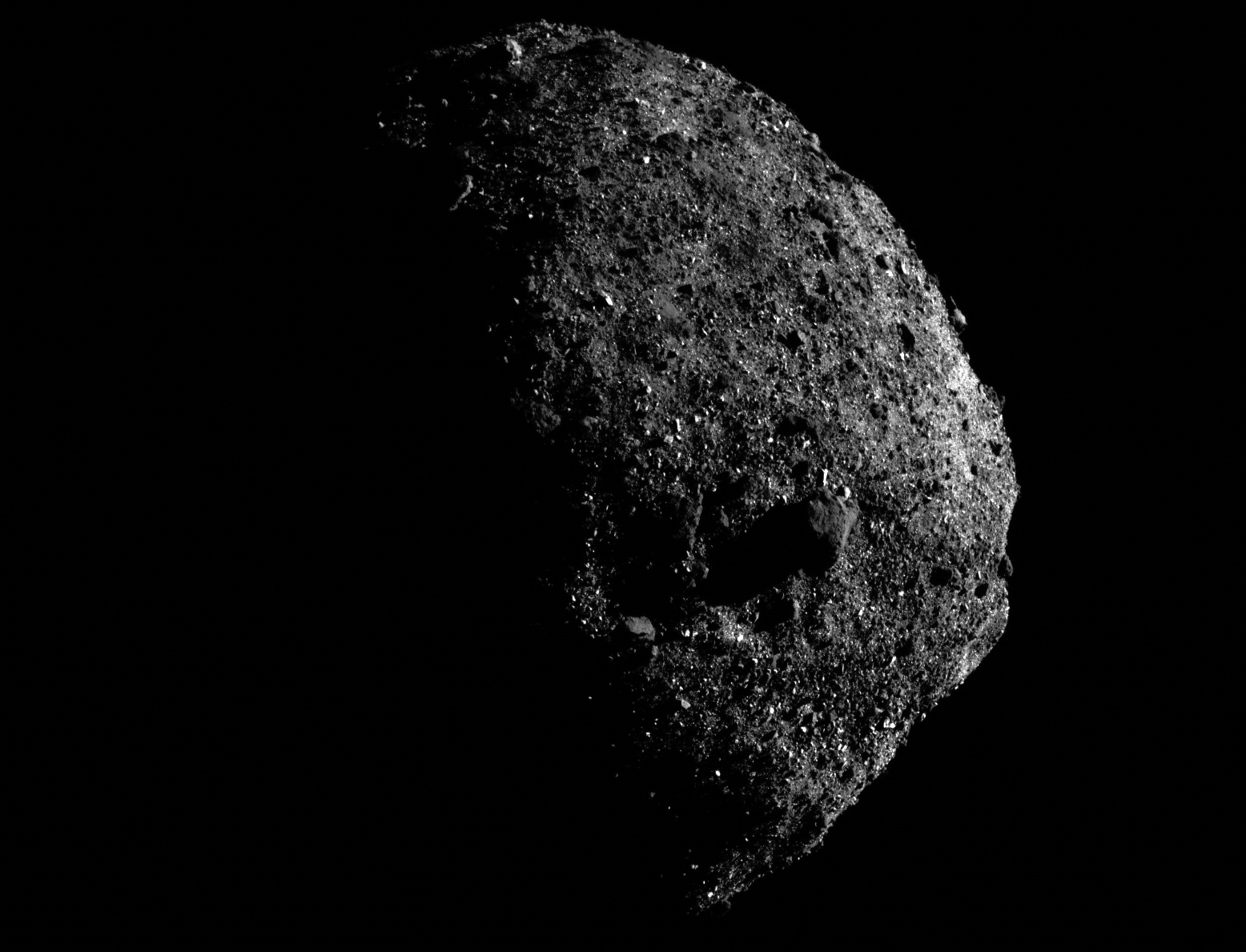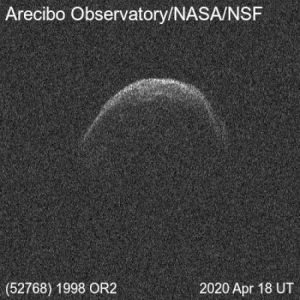- Meteor Tracking Website
- Nasa Asteroid Watch Widget
- Nasa
- Nasa Asteroid Watch Program
- Nasa Asteroid Watch 2020
Transcript:
Mar 19, 2021 The asteroid, officially known by NASA as 231937, is smaller than the last notable one to closely approach Earth, but it will be three times closer, NASA said in a statement. NASA Analysis: Earth Is Safe From Asteroid Apophis for 100-Plus Years 2021-03-25. After its discovery in 2004, asteroid 99942 Apophis had been identified as one of the most hazardous asteroids that could impact Earth. But that impact assessment changed as astronomers tracked Apophis and its orbit became better determined.
How do we spot near-Earth asteroids?
To start, survey telescopes scan the sky.
When multiple pictures of the same spot show a spec that's moving, computers automatically check it against a database of known objects.
If there's no match, it gets added to a list of objects to confirm.
And if it looks like it will pass very close to us, we give it top priority.
Then it's time to call in for reinforcement: More astronomers from NASA, other institutions and even the amateur community submit additional observations.
Each new data point helps refine the projected path.
And this asteroid is going to fly right on by.
All the info will be posted online so it can continue to be tracked and monitored.
Nice work planetary defense team! Keep watching the skies.
NASA's OSIRIS-REx asteroid probe will attempt to collect samples of asteroid Bennu today Tuesday (Oct. 20) and you can watch it live here.
OSIRIS-REx launched to asteroid Bennu in 2016 as NASA's first asteroid sample-return mission. The spacecraft arrived at Bennu in 2018 and is expected to return its samples to Earth in 2023. First, OSIRIS-REx must collect Bennu samples. That begins today with its first 'tag' maneuver.

NASA's webcast will begin at 5 p.m. EDT (2100 GMT) and cover OSIRIS-REx's sampling attempt at 6:13 p.m. EDT (2213 GMT). The webcast will end at 6:30 p.m. EDT (2230 GMT).
Starting at 1 p.m. EDT (1700 GMT), you can following OSIRIS-REx's approach to Bennu live with a real-time animation at the mission's website here.
From NASA:
Editor's Note: This advisory was updated on Monday, Oct. 19, to reflect programming changes for Monday, Nov. 19.
NASA will broadcast coverage of a first for the agency as its Origins, Spectral Interpretation, Resource Identification, Security-Regolith Explorer (OSIRIS-REx) mission attempts to collect a sample of asteroid Bennu on Tuesday, Oct. 20, at 6:12 p.m. EDT.
Live coverage of the spacecraft’s descent to the asteroid’s surface for its “Touch-And-Go,” or TAG, maneuver, which will be managed by Lockheed Martin Space near Denver, will begin at 5 p.m. on NASA Television and the agency’s website.
Beginning with an orbit departure maneuver around 1:50 p.m., the full sequence of the complicated engineering feat will be covered on @OSIRISREx, and media and the public can ask questions using the hashtag #ToBennuandBack.
In addition to the broadcast Tuesday, Oct. 20, briefings and social media activities will cover the mission and asteroid science on Monday, Oct. 19.
OSIRIS-REx, which is about the size of a 15-passenger van, is currently orbiting the asteroid Bennu 200 million miles from Earth. Bennu contains material from the early solar system and may contain the molecular precursors to life and Earth’s oceans. The asteroid is about as tall as the Empire State Building and could potentially threaten Earth late in the next century, with a 1‐in‐2,700 chance of impacting our planet during one of its close approaches. OSIRIS-REx is now ready to take a sample of this ancient relic of our solar system and bring its stories and secrets home to Earth.
Full mission coverage and participants (all times Eastern):
Monday, Oct. 19
1 p.m. – Asteroid Science and Planetary Defense media teleconference with the following participants:
Lori Glaze, Planetary Science Division director, NASA Headquarters, Washington
Hal Levison, Lucy mission principal investigator, Southwest Research Institute, Boulder, Colorado
Lindy Elkins-Tanton, Psyche mission principal investigator, Arizona State University, Tempe
Andrea Riley, DART mission program executive, NASA Headquarters
Jamie Elsila, research scientist at NASA Goddard Space Flight Center, Greenbelt, Maryland
3 p.m. – OSIRIS-REx Science and Engineering media teleconference, airing live on nasa.gov/live, with the following participants:
Thomas Zurbuchen, associate administrator, Science Mission Directorate, NASA Headquarters, Washington
Lori Glaze, Planetary Science Division director, NASA Headquarters
Heather Enos, OSIRIS-REx deputy principal investigator, University of Arizona, Tucson
Kenneth Getzandanner, OSIRIS-REx flight dynamics manager, Goddard
Beth Buck, OSIRIS-REx mission operations program manager, Lockheed Martin Space, Littleton, Colorado
4:45 to 5:30 p.m. (event begins at 5 p.m.) – Live Social Media Question-and-Answer Session, airing on NASA TV, with the following participants:
Tuesday, Oct. 20
1:20 to 6:30 p.m. – Live stream animation displaying OSIRIS-REx’s sample collection activities in real time. The animation commences with the spacecraft’s slew into position for the Orbit Departure Maneuver and runs through the entire sequence of TAG events, concluding after the spacecraft’s back-away burn. Event will be broadcast on the mission’s website.
5 to 6:30 p.m. – Live broadcast from Lockheed Martin of OSIRIS-REx’s descent to the surface of Bennu and attempt at sample collection.
Hosted by Dante Lauretta, OSIRIS-REx principal investigator at the University of Arizona, and Michelle Thaller, science communicator at Goddard, the broadcast will cover milestones in the last 90 minutes leading up to TAG and spacecraft back-away. It will include perspectives from team members and science leaders about the mission’s challenges and accomplishments.
A clean feed of the Mission Support Area during TAG is planned to run on NASA’s media channel.
Wednesday, Oct. 21
5 p.m. – Post-sampling news conference – and release of new images – with the following participants:
Dante Lauretta, OSIRIS-REx principal investigator, University of Arizona, Tucson
Rich Burns, OSIRIS-REx project manager, NASA’s Goddard Space Flight Center in Greenbelt, Maryland
Sandra Freund, OSIRIS-REx mission operations manager, Lockheed Martin Space, Littleton, Colorado
For phone bridge information, media should contact Lonnie Shekhtman at lonnie.shekhtman@nasa.gov no later than 1 p.m. Oct. 21.
6:15 to 6:45 p.m. – A NASA Science Live episode will air with team members answering live questions from the public about TAG, OSIRIS-REx, and asteroid science. Use #ToBennuAndBack to participate.
Virtual NASA Social
NASA also will host a #ToBennuAndBack Virtual NASA Social. RSVP to the Facebook event for social media updates.
NASA Social participants will get a chance to:

Connect virtually with like-minded space enthusiasts as we prepare for TAG
Meteor Tracking Website
Receive a NASA Social badge to share online or print at home
Virtually tour the asteroid Bennu
Access the broadcast and other activities around TAG
By applying to the group, participants are explicitly agreeing to the group's rules as set forth by NASA. All membership questions must be answered to be accepted to the group.
NASA’s Goddard Space Flight Center in Greenbelt, Maryland, provides overall mission management, systems engineering, and the safety and mission assurance for OSIRIS-REx. Dante Lauretta of the University of Arizona, Tucson, is the principal investigator, and the University of Arizona also leads the science team and the mission’s science observation planning and data processing. Lockheed Martin Space near Denver built the spacecraft and is providing flight operations. Goddard and KinetX Aerospace are responsible for navigating the OSIRIS-REx spacecraft. OSIRIS-REx is the third mission in NASA’s New Frontiers Program, which is managed by NASA’s Marshall Space Flight Center in Huntsville, Alabama, for the agency’s Science Mission Directorate in Washington.
For more information on the OSIRIS-REx mission, visit:
The OSIRIS-REx press kit is available at:
Delayed: SpaceX GPS satellite launch for US Space Force
Update for 9:57 p.m. EDT, Oct. 2: The SpaceX Falcon 9 rocket carrying the GPS III SV04 navigation satellite for the U.S. Space Force suffered an abort just two seconds before tonight's liftoff. A new launch date has not yet been announced.
A SpaceX Falcon 9 rocket will launch the GPS III SV04 satellite for the U.S. Space Force and Air Force from Space Launch Complex 40 at the Cape Canaveral Air Force Station in Florida.
From SpaceX
/https%3A%2F%2Fspecials-images.forbesimg.com%2Fimageserve%2F5f8851bdd4342172ce2ef981%2F0x0.jpg%3FcropX1%3D0%26cropX2%3D2700%26cropY1%3D731%26cropY2%3D2250)
SpaceX is targeting Friday, October 2, for a Falcon 9 launch of the GPS III Space Vehicle 04 mission from Space Launch Complex 40 (SLC-40) at Cape Canaveral Air Force Station in Florida. The 15-minute launch window opens at 9:43 p.m. EDT, or 01:43 UTC on October 3.
Following stage separation, SpaceX will land Falcon 9’s first stage on the “Just Read the Instructions” droneship, which will be stationed in the Atlantic Ocean. The spacecraft will deploy approximately 1 hour and 29 minutes after liftoff.
Last week, the United States Space Force’s Space and Missile Systems Center (SMC) announced an agreement with SpaceX to launch previously flown boosters on future National Security Space Launch (NSSL) missions.
You can watch the launch webcast here, starting about 15 minutes before liftoff.
Nasa Asteroid Watch Widget
Delayed: ULA Delta IV Heavy launching NROL-44 spy satellite
Update for Sept. 30, 11:59 p.m. EDT: Tonight's launch attempt was scrubbed after the rocket's Terminal Countdown Sequencer Rack detected an issue. A new launch target has not been announced.
A United Launch Alliance Delta IV Heavy rocket will launch a classified spy satellite for the U.S. National Reconnaissance Office Wednesday night (Sept. 30).
The mission, titled NROL-44, will lift off from Cape Canaveral Air Force Station in Florida, at 11:54 p.m. EDT (0354 GMT on Oct. 1). Watch it live in the window above, courtesy of ULA.
From ULA:
Rocket: Delta IV Heavy
Mission: NROL-44 Launch
Date: Sun., Sept. 27, 2020
Launch Time: 12:10 a.m. EDT
Launch Location: Space Launch Complex-37, Cape Canaveral Air Force Station, Florida
Nasa
Mission Information: A United Launch Alliance (ULA) Delta IV Heavy rocket will launch the NROL-44 mission for the National Reconnaissance Office (NRO). Liftoff will occur from Space Launch Complex-37 at Cape Canaveral Air Force Station, Florida.
Launch Notes: This will be 141st mission for United Launch Alliance and our 29th for the NRO. It is the 385th Delta launch since 1960, the 12th Delta IV Heavy and the 8th Heavy for the NRO.
Launch Updates: To keep up to speed with updates to the launch countdown, dial the ULA launch hotline at 1-877-852-4321 or join the conversation at www.facebook.com/ulalaunch, twitter.com/ulalaunch and instagram.com/ulalaunch; hashtags #DeltaIVHeavy #NROL44
'ISS Live!' Tune in to the space station
Find out what the astronauts and cosmonauts aboard the International Space Station are up to by tuning in to the 'ISS Live' broadcast. Hear conversations between the crew and mission controllers on Earth and watch them work inside the U.S. segment of the orbiting laboratory. When the crew is off duty, you can enjoy live views of Earth from Space. You can watch and listen in the window below, courtesy of NASA.
From NASA:

'Live video from the International Space Station includes internal views when the crew is on-duty and Earth views at other times. The video is accompanied by audio of conversations between the crew and Mission Control. This video is only available when the space station is in contact with the ground. During 'loss of signal' periods, viewers will see a blue screen.
Nasa Asteroid Watch Program
'Since the station orbits the Earth once every 90 minutes, it experiences a sunrise or a sunset about every 45 minutes. When the station is in darkness, external camera video may appear black, but can sometimes provide spectacular views of lightning or city lights below.'

Nasa Asteroid Watch 2020
Follow us on Twitter @Spacedotcom and on Facebook.
